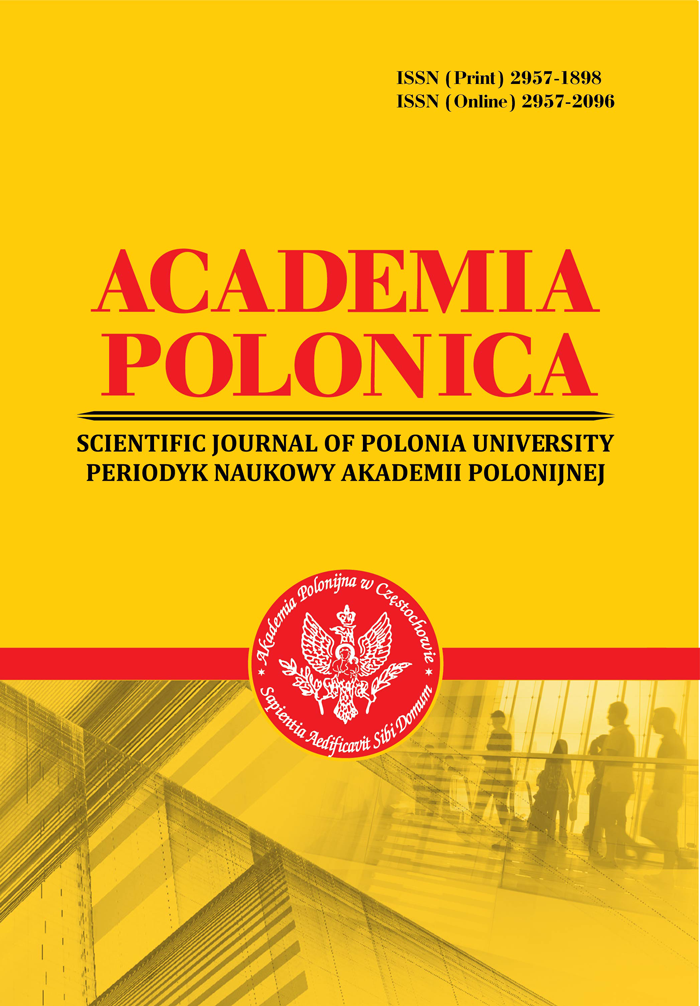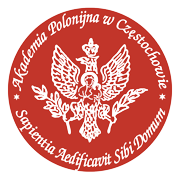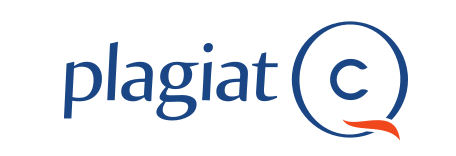THE DEVELOPMENT OF NON-LINGUISTIC STUDENTS’ CRITICAL THINKING SKILLS: PRACTICAL EXPERIENCE
Abstract
Critical thinking is an essential issue and one of the main goals of higher education, forcing modern domestic and foreign educators to use its strategies in English classes to form students’ general and professional competencies. The “Business English” for non-linguistic graduate students is no exception. A step-by-step presentation on the topic “Recruitment and Selection” is an example of one practical session to utilise new vocabulary in speaking, reading, listening and reviewing grammatical material. Three parts introduce the topic: “Recruitment”, “Applying for a Job” and “Selection Procedures”. This article discusses integrating new information and strategies for developing critical thinking skills at each stage of the lesson. Such strategies as “Forecasting Using Key Words”, “Question-Answer”, “Thin/Thick Questions”, “Keywords”, “Listing”, “Matching”, “Mind Map”, “Clustering”, “Crossword”, “Ordering and Sorting”, “Replacing” are demonstrated in their practical application. It has been stated that among the skills and abilities related to critical thinking are flexibility in adapting to life situations, independence in decision-making, skills to generalise and systematise knowledge, professional thinking, the ability to use information resources, and the capacity to seek and acquire new knowledge, etc. Practically every lesson stage is supported by graphical images and tables, particularly self-assessment tables. The research results will help educators improve the use of critical thinking strategies in English lessons at higher educational institutions. Furthermore, the article may serve as a valuable resource for students aiming to critically reflect on fundamental theories, principles, methods, and concepts in their academic pursuits and professional practices.
References
2. Boroushaki, N. (2015). The relationship between critical thinking ability and vocabulary learning strategy among EFL learners. Retrieved from https://core.ac.uk/download/pdf/268877913.pdf
3. Crawford, A., Saul, W., & Mathews, S. R. (2005). Teaching and learning strategies for the thinking classroom. New York: The International Debate Education Association.
4. Hlavatska, Yu. (2024). The development of critical thinking: writing a term paper via frame analysis. Pedahohichnyi almanakh, 55, 17–22. doi: https://doi.org/10.37915/pa.vi55.510
5. Iman, J. N. (2017). Debate Instruction in EFL Classroom: Impacts on the Critical Thinking and Speaking Skill. International Journal of Instruction, 10(4), 87–108.
6. Kharchenko, N. (2018). Rozvytok krytychnoho myslennia. Innovatsiini formy roboty dlia ditei i doroslykh [The development of critical thinking. Innovative forms of work for children and adults]. Kyiv: «Vydavnycha hrupa «Shkilnyi svit» [in Ukrainian].
7. Kiliç, M. (2019). Vocabulary Knowledge as a Predictor of Performance in Writing and Speaking: A Case of Turkish EFL Learners. PASAA, 57, 2–32.
8. Learn English Job Vocabulary and Job Phrases. (2025). YouTube. Retrieved from https://www.youtube.com/watch?v=GBiRbb9w3SE
9. Lutsiv, S. (2016). Pedahohichni umovy formuvannia krytychnoho myslennia uchniv pochatkovykh klasiv na urokakh ukrainskoi movy [The pedagogical conditions for developing critical thinking in primary school students during Ukrainian language lessons]. Aktualni pytannia humanitarnykh nauk. Seriia «Pedahohika», 16, 347–352 [in Ukrainian].
10. Mascul, B. (2012). Business Vocabulary in Use. Cambridge: Cambridge University Press.
11. Nikitchenko, O., & Tarasova O. (2017). Formuvannia navychok krytychnoho myslennia na urokakh inozemnoi movy [The development of critical thinking skills in foreign language lessons]. Kharkiv: Drukarnia Madryd [in Ukrainian].
12. Pochynkova, M. (2020). Systema formuvannia krytychnoho myslennia maibutnikh uchyteliv pochatkovoi shkoly u protsesi profesiinoi pidhotovky [The system for the formation of critical thinking in future primary school teachers in the process of professional training]. Kyiv: Talkom [in Ukrainian].
13. Pometun, O. (2012). Metodyka rozvytku krytychnoho myslennia na urokakh istorii [The methodology for developing critical thinking in history lessons]. Istoriia i suspilstvoznavstvo v shkola krainy: teoriia ta metodyka navchannia, 1, 3–7 [in Ukrainian].
14. Pometun, O. I., & Hupan, N. (2018). Yak rozvyvaty krytychne myslennia uchniv za dopomohoiu novoho pidruchnyka z istorii Ukrainy [How to develop students’ critical thinking through a new textbook on the history of Ukraine]. Istoriia i suspilstvoznavstvo v shkolakh Ukrainy: teoriia ta metodyka navchannia, 2, 69–76 [in Ukrainian].
15. Pometun, O. І. (2018). Krytychne myslennia yak pedahohichnyi fenomen [Critical thinking as a pedagogical phenomenon]. Ukrainskyi pedahohichnyi zhurnal, 2, 89–98 [in Ukrainian].
16. Quizlet. Recruitment and Selection. (2025). Retrieved from https://quizlet.com/947790465/flashcards
17. Recruitment and Selection Process: Best Practices & Overview. (2025). Retrieved from https://www.personio.com/hr-lexicon/recruitment-and-selection/
18. Recruitment. (2025). Retrieved from https://www.pelagohealth.com/resources/hr-glossary/recruitment/
19. Revutska, S. (2023). Rozvytok krytychnoho myslennia v protsesi vdoskonalennia navychok produktyvnykh vydiv movlennievoi diialnosti [The development of critical thinking in the process of enhancing skills for productive types of speech activities]. Vykladannia mov u vyshchykh navchalnykh zakladakh osvity, 43, 102–114. doi: https://doi.org/10.26565/2073-4379-2023-43-07 [in Ukrainian].
20. Sadovnikov, O., & Vasylchenko, V. (2023). Formuvannia krytychnoho myslennia u zdobuvachiv vyshchoi osvity [The development of critical thinking in higher education]. Collection of scientific papers “SCIENTIA”, 3, 91–93 [in Ukrainian].
21. Sharafi-Nejad, M., Raftari, S., Ismail, S., & Eng, L. S. (2016). Exploring the Effectiveness of Critical Thinking on Vocabulary Learning by Malaysian EFL Learners. Journal of Studies in Education, 6(2), 24–39. doi: http://doi.org/10.5296/jse.v6i2.9520
22. Soloviova, N. (2023). Zastosuvannia metodu TBL pry formuvanni krytychnoho myslennia pid chas navchannia anhliiskoi movy [The application of the TBL method in developing critical thinking during English language learning]. Modern Engineering and Innovative Technologies, 3(25-03), 79–84. doi: https://doi.org/10.30890/2567-5273.2023-25-03-038 [in Ukrainian].
23. Sovach, K. (2024). Teaching critical thinking: theoretical and practical backgrounds (Ukrainian and foreign experience). Elektronnyi zhurnal «Visnyk nauky ta osvity», Seriia «Pedahohika», 1 (19), 653–664. doi: http://doi.org/10.52058/2786-6165-2024-1(19)-652-664
24. Sovach, K. (2024). Vocabulary expansion through critical thinking (some instructions for teachers and students). Elektronnyi zhurnal «Suspilstvo ta natsionalni interesy», Seriia «Osvita/Pedahohika», 4(4), 176–188. doi: https://doi.org/10.52058/3041-1572-2024-4(4)-176-187
25. Tamara, D. R., & Rusfandi. (2021). The use of Think-Talk-Write (TTW) strategy and its effect on the tenth grade students’ ability in writing descriptive text. Jurnal Inspirasi Pendidikan, 11(1), 51–60. doi: https://doi.org/10.21831
26. The Selection Process – A Practical Guide. (2025). Retrieved from https://www.google.com/s e a rc h ? r l z = 1 C 1 C H B D _ r u U A 9 9 2 U A 9 9 2 & s c a _ e s v = a 5 b 8 e c e d 6 4 f e 7 5 3 d & s c a _upv=1&cs=0&sxsrf=ADLYWILcgosGw8yTsb-11Cl-T4HGoI3TUw:1727769870238&q=Selection+process+video&sa=X&ved=2ahUKEwifgvSq3OyIAxXgSvEDHY9aA30QpboHKAR6BAgBEAY&biw=1280&bih=559&dpr=1.5#fpstate=ive&vld=cid:e97a0453,vid:RZHJr-Tm14A,st:0
27. What is Recruitment and Selection? (2025). YouTube. Retrieved from https://www.youtube.com/watch?v=yeVmteq8D_Q
28. What is Recruitment? Recruitment definition. (2025). Retrieved from https://www.sage.com/en-us/blog/glossary/what-is-recruitment/
29. Wibowo, H., & Fitriana, C. (2017). Investigating the correlation between critical thinking ability and grade eleven students’ vocabulary achievement. Lingua Jurnal Pendidikan Bahasa, 1(01), 52–62. doi: https://doi.org/10.34005/lingua.v1i01
Abstract views: 266 PDF Downloads: 66







